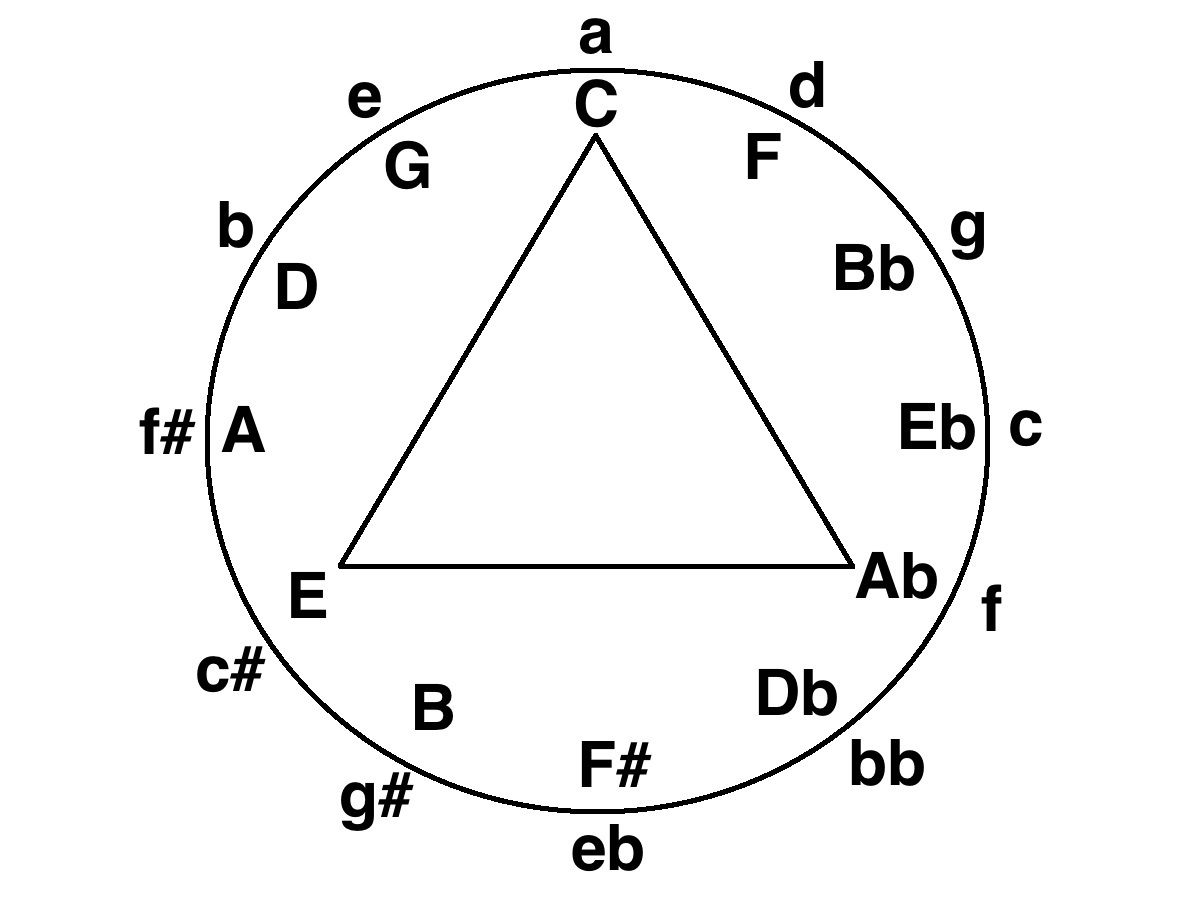Coltrane Changes refers to substitute chord progressions in jazz harmony made popular by jazz musician, John Coltrane.
You can hear the changes in songs like “Countdown,” “Giant Steps,” and others.
It consists of a chord progression essentially moving in “THIRDS” by using the dominant chord of the key a third away to transition there.
My chord guide introduces intervals, but here’s a quick refresher:
Half step = key to key with no keys in between. (Example: C to Db, or E to F, or Bb to B).
Whole step = skips a key with one key in between. (Example: C to D, or E to F#, or Bb to C).
Major third = 4 half steps. (Example: C to E or G to B or D to F#).
Minor third = 3 half steps. (Example: C to Eb or F to Ab or Bb to Db).
In C major, here’s what the Coltrane Changes look like moving down in major thirds:
C >>> Ab >>> E
C down to Ab = 4 half steps
(C to B is 1, B to Bb is 2, Bb to A is 3, A to Ab is 4).
Ab down to E = 4 half steps
(Ab to G is 1, G to Gb is 2, Gb to F is 3, F to E is 4).
This equally divides the octave, which brings us back to C:
C >>> Ab >>> E >>> C
Coltrane Changes – Explained
Instead of going from a C major chord straight to the Ab major chord, straight to the Eb major chord, Coltrane introduces the dominant chord of each key.
The dominant degree is the 5th tone of every scale (or a perfect fifth up from the “tonic,” or first tone of the scale). Because of its instability, it provides the strongest resolution to the tonic.
*Tonic = home base, the key you’re in, the 1st tone of the scale.
In C major, the dominant is G.
G is the fifth tone of this scale, and thus the dominant scale degree.
In Ab major, the dominant is Eb.
In E major, the dominant is B.
It just so happens the most popular chord to play on the dominant degree is the dominant 7th chord. (You can learn all your dominant 7th chords in my free chord guide).
G dominant 7
Eb dominant 7
B dominant 7
When you put this all together, you get:
C > “5 of Ab” > Ab > “5 of E” > E > “5 of C” > C
or
C > Eb > Ab > B > E > G > C
The main chord tones are C major, Ab major, and E major (all separated by major thirds).
The dominant chords leading to each are Eb 7 (leading to Ab major), B 7 (leading to E major), and G 7 (leading back to C major).
Coltrane Changes – Putting It All Together
Here are the actual voicings of the Coltrane Changes:
C major (I)
Eb 7 (V of ♭VI)
Ab major (♭VI)
B 7 (V of III)
E major (III)
G 7 (V of I)
C major (I)
It’s interesting when you look at the circle of fifths (something we use a lot around here), the keys “C,” “Ab,” and “E” (all major thirds apart) create a triangle. If you keep sliding this triangle a note over, you will get the major third relationships for all 12 keys and thus the “Coltrane Changes” in all keys.

These recordings aren’t in the same key as the examples above, but you can hear the general idea below:
“Giant Steps”
“Countdown”







Comments on this entry are closed.